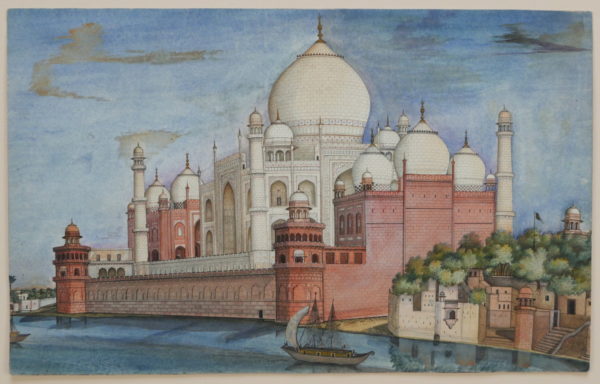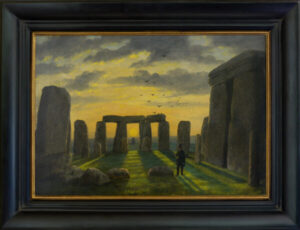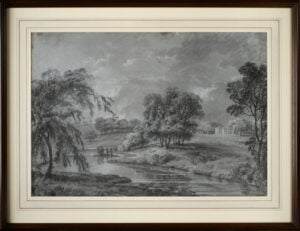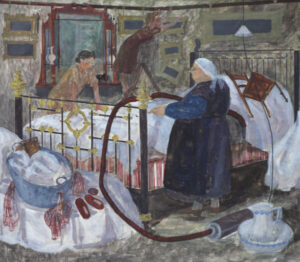Description
Mehtab Bagh (‘Moonlight Garden’) lies north of the Taj Mahal complex and the Agra Fort on the opposite side of the Yamuna River, in the flood plains. The garden complex, square in shape, measures about 300 by 300 metres and is perfectly aligned with the Taj Mahal on the opposite bank. The view speaks to the brilliance of the architect. Moreover, by raising the Taj onto an elevated foundation, the builders ensured that Shah Jahan’s funerary complex as well as the tombs of other Mughal nobles along with their attached gardens could be viewed from many angles along the river.
Mazhar Ali Khan was a late-Mughal era, 19th century painter from Delhi, working in the Company style of post-Mughal painting under Western influence. He was active from 1840, and is known for his noted work of topographical paintings commissioned by Sir Thomas Metcalfe’s, Delhi Book.
Brand
Company School - India
‘Company painting’ is a broad term for a variety of hybrid styles that developed as a result of European (especially British) influence on Indian artists from the early 18th to the 19th centuries. It evolved as a way of providing paintings that would appeal to European patrons who found the purely indigenous styles not to their taste. As many of these patrons worked for the various East India companies, the painting style came to be associated with the name, although it was in fact also used for paintings produced for local rulers and other Indian patrons.
The subject matter of company paintings made for western patrons was often documentary rather than imaginative, and as a consequence, the Indian artists were required to adopt a more naturalistic approach to painting than had traditionally been usual. Europeans commissioned sets of images depicting festivals and scenes from Indian life or albums illustrating the various castes and occupations, as well as the architecture, plants and animals of the sub-continent.
While most of the works were painted on paper, there was also a fashion for images of Mughal monuments and Mughal rulers and their wives painted on small plaques of ivory. This increased use of western approaches to painting coincided with the later phases of local painting styles, as manifested in centres such as Lucknow, Murshidabad and Delhi in North India and Mysore and Thanjavur in the South. As a result, the line between ‘company’ painting and later provincial work for local patrons is often blurred.



